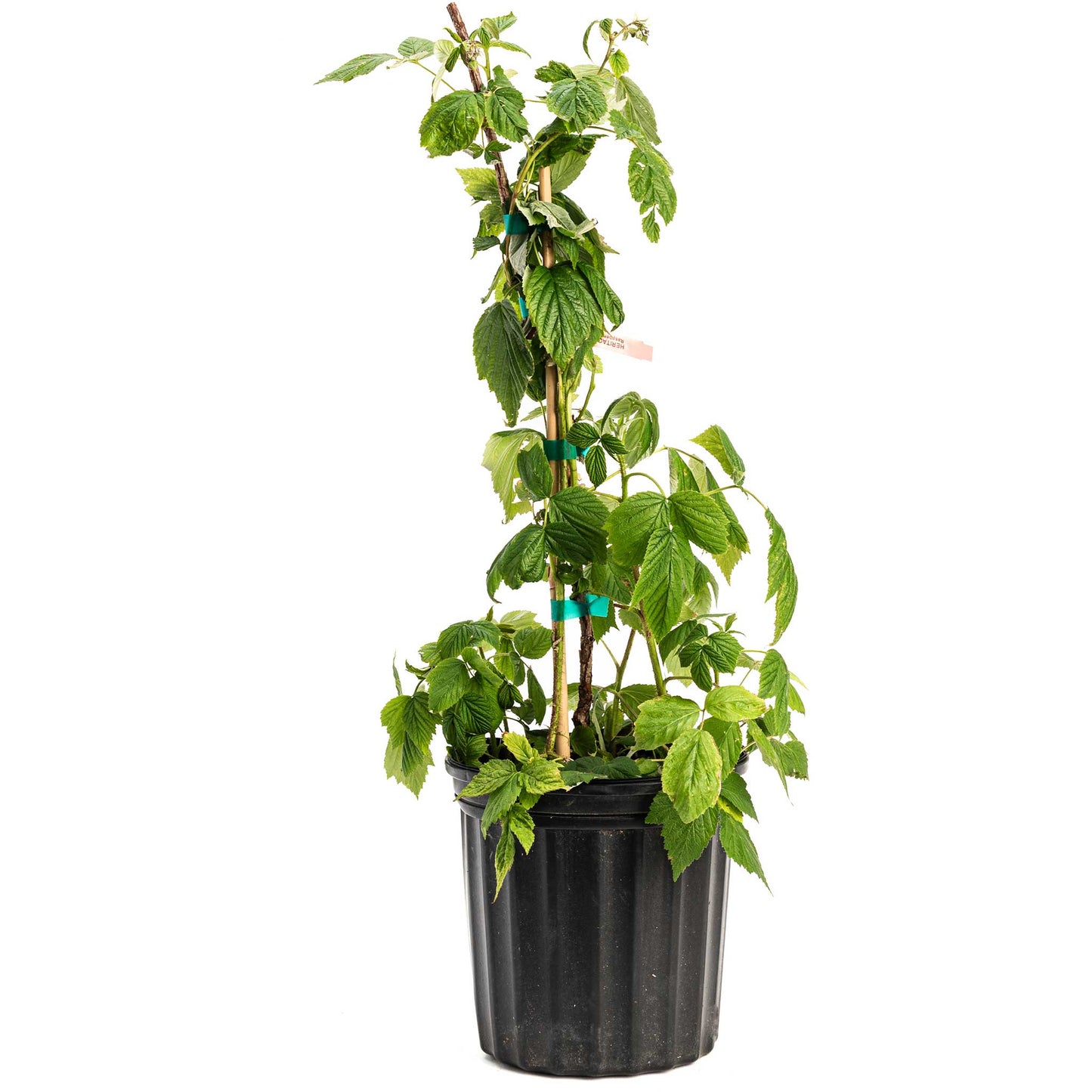Heritage Raspberry
Heritage Raspberry
SKU:EDB-RAS-HER-23-2G
Get Ready for a Berry Bonanza with Heritage Raspberry!
Are you craving a sweet addition to your garden that's both delightful and easy to grow? Look no further than the Heritage Raspberry! This hardy perennial is a garden favorite, offering a bountiful harvest of juicy, sun-ripened berries that'll make your taste buds dance.
Why Heritage Raspberry?
- Ever-bearing Delight: Enjoy a double treat with fruits in summer AND fall. That's right, this plant keeps the goodies coming!
- Low Maintenance: Forget about fussy plants. Heritage Raspberry thrives with minimal fuss, making it perfect for gardeners of all levels.
- Perfect for Pies and Jams: Transform your harvest into mouthwatering desserts or spreadable jams that capture the essence of summer.
Just imagine fresh, juicy raspberries from home. Order your Heritage Raspberry to make that dream come true!




Product Details
-
Product Category
Edibles
-
Product Subcategory:
Berries
-
Botanical Name:
Rubus 'Heritage'
-
Does Not Ship To:
AZ, OR
-
Mature Height:
4-8 ft.
-
Mature Width:
3-6 ft.
-
Growing Zone:
4-8 outdoors
-
Indoor Growing:
-
Sunlight:
Full Sun
-
Growth Rate:
Moderate
-
Harvest Time:
July - September
-
Bloom Time:
Spring

Planting Directions
<h2>Planting Heritage Raspberry</h2>
<ul>
<li>Choose a sunny location with well-draining soil.</li>
<li>Amend the soil with compost or aged manure to improve fertility.</li>
<li>Space plants about 2-3 feet apart in rows 6-8 feet apart.</li>
<li>Dig a hole twice as wide and the same depth as the root ball.</li>
<li>Place the plant in the hole, spreading out the roots gently.</li>
<li>Backfill the hole with soil and water thoroughly.</li>
<li>Apply a layer of mulch around the base to retain moisture and suppress weeds.</li>
</ul>
<h2>Care for Heritage Raspberry</h2>
<p>Water the raspberries regularly, keeping the soil consistently moist but not waterlogged. Fertilize with a balanced 10-10-10 fertilizer in early spring and again in mid-summer. Prune the canes that have fruited immediately after harvesting, as Heritage is an everbearing variety and will produce fruit on new canes. Support canes with a trellis system to keep them upright and ensure good air circulation.</p>
<h2>Pollination</h2>
<p>Raspberries are self-fertile, so they don't require another plant for pollination. However, attracting bees and other pollinators will help increase yields. Plant pollinator-friendly flowers nearby or avoid using pesticides that could harm these beneficial insects.</p>
<h2>Harvesting</h2>
<p>Harvest Heritage raspberries when they are fully ripe and easily pull away from the plant. This typically occurs from mid-summer to early fall. Pick berries every couple of days to keep plants producing. Eat fresh, or store in the refrigerator for a few days, or freeze for longer storage.</p>

FAQs
<h2>FAQs for the Heritage Raspberries</h2>
<h3>1. How do I plant Heritage Raspberries?</h3>
<ol>
<li><strong>Choose the right location:</strong> Select a sunny spot with well-draining soil. Raspberries prefer a pH between 5.5 and 6.5.</li>
<li><strong>Prepare the soil:</strong> Loosen the soil to a depth of about 12 inches and mix in a 2-inch layer of compost to enrich it.</li>
<li><strong>Planting:</strong> Dig holes that are twice the width of the roots and the same depth as the container they came in. Space raspberry plants about 2 feet apart, in rows 6 feet apart.</li>
<li><strong>Watering:</strong> After planting, water the plants thoroughly. Keep the soil consistently moist but not waterlogged.</li>
<li><strong>Mulching:</strong> Apply a 2-3 inch layer of mulch around the plants to retain moisture, suppress weeds, and keep the roots cool.</li>
</ol>
<h3>2. How do I fertilize Heritage Raspberries?</h3>
<ul>
<li><strong>Initial fertilization:</strong> Mix a balanced 10-10-10 fertilizer into the soil at planting time, following the manufacturer's instructions for the amount.</li>
<li><strong>Annual fertilization:</strong> Apply a balanced fertilizer early in the spring, just as the new growth appears. You can also add compost or well-rotted manure around the plants for added nutrients.</li>
<li><strong>Avoid over-fertilizing:</strong> Too much fertilizer can harm the plants. It's important to follow the recommended rates.</li>
</ul>
<h3>3. How do I support Heritage Raspberries?</h3>
<p><strong>Use a trellis system:</strong> Heritage raspberries benefit from support to keep them upright and promote air circulation. Install posts at the end of each row and stretch wires between them at heights of 2 feet and 4 feet. Tie the canes to the wires as they grow.</p>
<h3>4. How do I prune Heritage Raspberries?</h3>
<ul>
<li><strong>Summer pruning:</strong> After fruiting, cut all canes that have produced fruit back to the ground to prevent disease and pests.</li>
<li><strong>Winter pruning:</strong> In late winter, thin the canes, leaving the healthiest and strongest canes about 6 inches apart. Remove any weak, damaged, or diseased canes at ground level.</li>
</ul>
<h3>5. How do I harvest Heritage Raspberries?</h3>
<p><strong>Timing and technique:</strong> Harvest Heritage raspberries when they are fully ripe and easily come off the vine with a gentle pull. This usually occurs in the late summer or early fall. Pick the berries in the morning when they are cool and dry. Store them in a cool place immediately after harvesting and use or process them as soon as possible to maintain their quality.</p>





